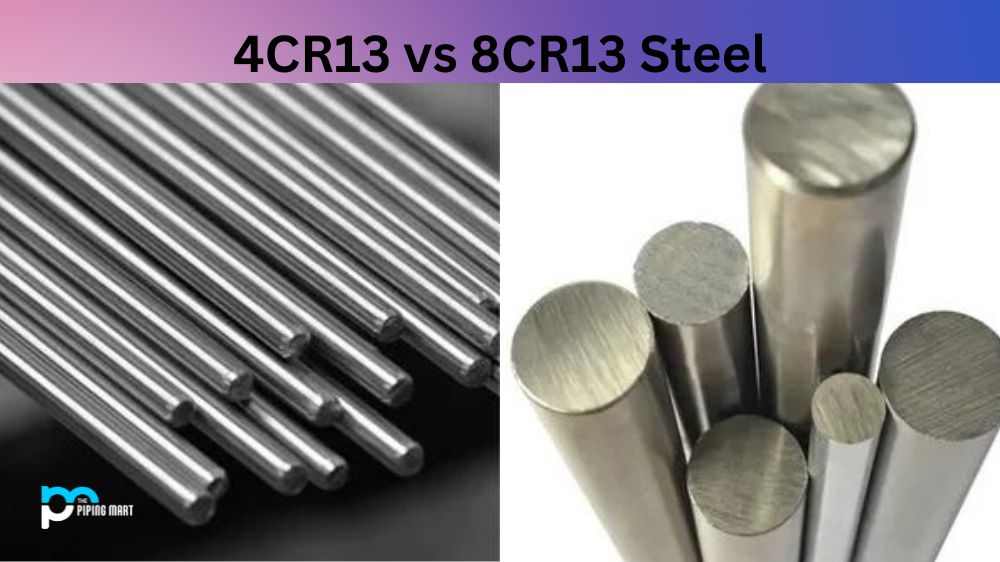When it comes to knives, the type of steel used in its construction is a deciding factor in its durability, sharpness, and functionality. Recently, two types of steel have been the subject of debate amongst knife enthusiasts: 4CR13 and 8CR13. While both are stainless steel, their composition and suitability for various functions lie in their differences. In this blog, we dive deeper into the features, differences, and applications of 4CR13 vs 8CR13 Steel.
What is 4CR13 Steel?
4CR13 Steel is a martensitic stainless steel with high hardness, excellent corrosion resistance and sharpness. It is used for making blades, scissors and other cutting tools because of its strength, durability and wear resistance. It contains 13% chromium, which gives it strong physical properties. Additionally, due to its low carbon content, it can be heat treated for increasing toughness and ductility while simultaneously maintaining a high hardness level.
What is 8CR13 Steel?
8CR13 Steel is a Chinese-made stainless steel alloy used primarily in knives and other cutting tools. It’s an inexpensive yet strong material that can be easily sharpened and offers good rust resistance. It consists of 8% carbon, 0.75% manganese, 0.5% silicon, 1% chromium, and 0.2% molybdenum for added strength and durability. When properly heat treated, it holds a great edge for long periods with little maintenance needed!
Difference Between 4CR13 and 8CR13 Steel
Chemical Composition:
The primary difference between these two types of steel lies in their chemical composition. Both 4CR13 and 8CR13 are stainless steels, which means they contain a minimum of 11% chromium. However, 4CR13 steel contains less carbon, approximately 0.40%-0.50%, and 13% of chromium, whereas 8CR13 steel contains 0.80% carbon and 13% of chromium. Due to the difference in carbon content, 8CR13 steel is harder and more durable, whereas 4CR13 is softer and easier to sharpen.
Hardness:
Regarding hardness, 8CR13 steel is on the higher end of the Rockwell scale with a rating of 57-59, while 4CR13 is rated 55-56. The difference in hardness means that 8Cr13 is more suitable for heavy-duty usage, such as survival knives, whereas 4CR13 is suitable for light-duty usage, such as pocket knives.
Corrosion Resistance:
Both 4CR13 and 8CR13 steel have adequate corrosion resistance, making them suitable for use in outdoor environments. However, due to its higher carbon content, 8CR13 steel has a higher corrosion resistance than 4CR13 steel.
Edge Retention:
Edge retention is the ability of a knife to retain its sharpness after extended use. 8CR13 steel has excellent edge retention due to its hardness and carbon content. On the other hand, 4CR13 steel has lower edge retention but is easier to sharpen, making it a better option for everyday use.
Conclusion:
In conclusion, choosing between 4CR13 and 8CR13 steel will depend entirely on the knife’s intended use. If you require a pocket knife or a knife that is easy to sharpen for everyday use, 4CR13 steel would be an ideal choice. However, if you are looking for a heavy-duty knife that can withstand harsh environments and maintain its sharpness, 8CR13 steel would be the better option. Ensure you choose a reputable brand when purchasing knives made from either steel type to ensure its quality and functionality.
Meet Heer, a dynamic and driven writer learning tricks of her trade in the metal industry. With a background in Digital Marketing, Heer brings a unique perspective to her writing, sharing valuable insights. Apart from blogging she like reading and hiking.




